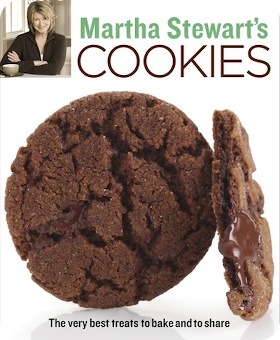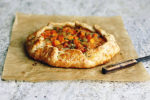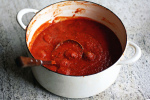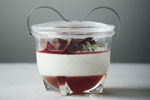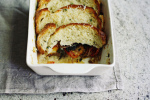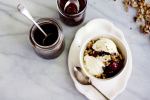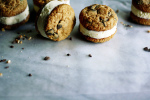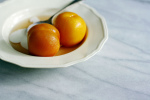Martha, Martha, Martha; a review of Martha Stewart's Cookies
 Tuesday, April 29, 2008 at 8:25AM
Tuesday, April 29, 2008 at 8:25AM 
As of late, Martha Stewart, baking and food blogs seem to go hand in hand. With Sunday's launch of the cookie-centric contest at marthastewart.com, it is an appropriate opportunity to take a closer look at the prize up for grabs; copies of Martha Stewart's Cookies (Clarkson Potter, 2008). The latest cookbook from the editors of Martha Stewart Living, it is a comprehensive collection of 175 their most versatile and tempting treats.
With its ingenious imaged-based table of contents, coupled with chapter headings organized by cookie texture, this book speaks directly to cravings and their indulgence. I have read some recipes delightfully described as "everyday", a phrase that evokes idyllic notions of an overfilled cookie jar; these are chocolate chip cookies in a myriad of variations, fudgy brownies, delicate sugar cookies and shortbread. Other recipes range from the festive (from Crumbly and Sandy: Vanilla-Bean Spritz Wreaths) to the elegant (from Crisp and Crunchy: Sweet Cardamom Crackers) to the downright decadent (from Rich and Dense: Chocolate Pistachio Cookies).
In regards to content it should be noted that some of these recipes have been previously published in various publications under the Martha Stewart mantle, specifically the special edition Holiday Cookie series. Some readers could be frustrated by this repetition, while others may appreciate having their best-loved favourites in a trade paperback version.
The layout of the recipes is clear and concise, each featuring a photo of the finished product. Although some follow the expected Martha Stewart aesthetic of colourful but simple styling, others depart from this look entirely. These shots are mid-range to close up photographs against a white background which, in comparison to the charm of the former, do seem a bit austere. That said, the minimalist approach does highlight the characteristic textures of the cookies quite well.
Two appendices, one on packaging and the other with information on techniques and cook's tools, are helpful additions. Inspired presentation ideas show off the cookies beautifully for giving, and the instructions frequently include step-by-step photos. The baking notes serve as a useful introduction to the novice baker and as helpful reminders to those more experienced.
In the name of research, the Peanut Butter and Jelly Bars (above and below) were the first to be made from this book. The luscious batter inspired nostalgic thoughts of childhood. Its rich scent reminiscent of the best peanut butter cookie crossed with Reese Pieces; the sort that has greedy fingers fighting over rights to lick the bowl. The finished cookie lived up to the charms of the dough, with tender cookie underneath, a layer of tangy-sweet jam in between and the salty crunch of peanuts and crisp crumble as a crowning crust. Perfect for a lunchbox or after-school treat, these cookies will surely become a household classic.
Peanut Butter and Jelly Bars
From Martha Stewart Holiday Cookies 2001.
The recipe featured in the book is subject to copyright but is quite similar to this version.
Notes:
• I used a combination of mixed berry jam and homemade mixed berry compote for the filling as I wanted a bit of tartness to offset the buttery-rich cookie layer.
• Toffee bits, coconut, honey-roasted nuts or white chocolate chips would be a wonderful substitution or addition to the peanut topping. For those looking for true excess, a chocolate spread or dulce de leche could be used instead of jam filling.
